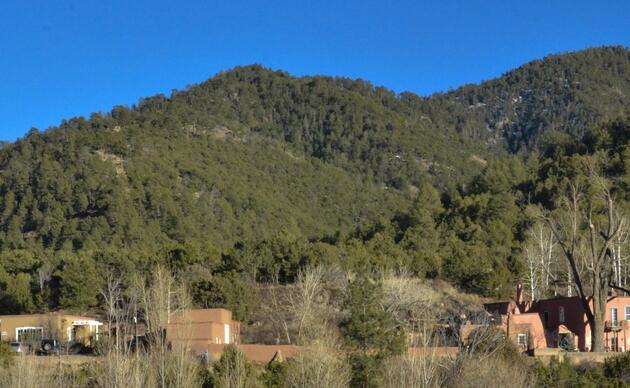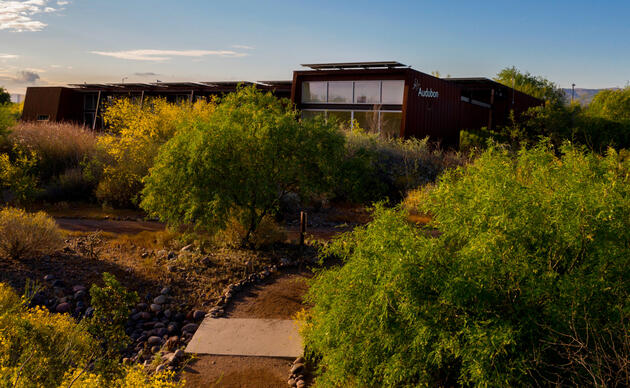Conservationists and Irrigation District Blaze the Way on Water Transfers
Between 2011-15, water managers and conservationists in the lower Rio Grande in New Mexico, partnered to address endangered species issues, ensure farmers can earn a living, and create an innovative water transaction program called the Rio Grande Environmental Water Transaction Program.
“It’s a collaborative effort to increase habitat territory for the southwestern willow flycatcher that is sensitive to farmers’ water needs,” says Beth Bardwell, director of freshwater conservation for Audubon New Mexico. “It’s cool because we’ve found a way to walk together down this path.”
As part of a long-term project by the United States International Boundary and Water Commission (USIBWC) to manage the Rio Grande Canalization Project—the 105-mile stretch between Percha Diversion Dam and the American Dam near El Paso—the commission has set aside funding for two projects, one dedicated to habitat restoration on nine pilot project sites and the other to establish an environmental water rights transaction program. To date, more than two hundred acres of saltcedar has been cleared and more than ten thousand cottonwoods and willow trees and shrub have been planted.
That funding was granted to the U.S. Fish and Wildlife Service (FWS), which passed money for the water transactions project through the nonprofit National Fish and Wildlife Foundation (NFWF). NFWF released a request for proposals, and awarded the contract to Audubon New Mexico.
In cooperation with the Elephant Butte Irrigation District (EBID), the nonprofits are seeking willing sellers, lessors, and donors of water rights—who will be compensated for water at the market rate. Having looked upriver to legal altercations between farmers and environmentalists in the Middle Rio Grande, farmers in the district did have their doubts, says Bardwell. The lower Rio Grande is fully adjudicated, and farmers worried the transactions might not be voluntary. For the program to work, farmers need to know they won’t incur liability under the Endangered Species Act if their water helps create new habitat for the endangered bird.
“They want assurances that in low water years, shortages will be shared,” she says, adding that the project’s partners worked with FWS to ensure that the agency’s Biological Opinion for the project recognized shared shortages in low water years—an unprecedented management tactic.
In 2014, there were 41 breeding territories and 25 breeding pairs in the reach. “The hope is that by restoring quality habitat below Elephant Butte, the number of breeding territories will be sustained even in periods of drought and changing climate,” says Bardwell.
The amount of water that could be transferred represents somewhere between 0.5 to 1.5 percent of the irrigation district’s full supply—a relatively small amount. But that water could be used in different ways, says Bardwell: to flood irrigate a pilot site; to help restore a pilot site from salt cedar to riparian shrub; to use as environmental peak releases, which would ride atop springtime irrigation releases; or to offset a net increase in depletions from changes in plant communities at a restoration site. The water, she adds, is for restoration at up to 30 sites.
A number of key decisions, opinions, policies and precedent setting transactions were accomplished by the collaborative efforts of partners: the USFWS Biological Opinion included critical water supply assurances; the USFWS excluded the reach from critical habitat designation for Southwestern Willow Flycatcher due to ongoing cooperative efforts; the EBID Board adopted a policy authorizing use of Rio Grande Project water for native riparian habitat restoration; the USIBWC completed 2 acquisitions of EBID surface water rights from individual willing sellers, the EBID Board approved transfers of the acquired rights to the Leasburg riparian habitat restoration site, and the site has been replanted and irrigated to restore a native a riparian woodland.
The Rio Grande Water Transactions Program is modeled most closely on NFWF’s Columbia Basin Water Transactions Program, says Darvid Yardas, NFWF’s director of southwest and interior water programs.
Ten years ago, the Bonneville Power Administration began working with NFWF to manage a program that supports voluntary transaction to improve Columbia River flows in Idaho, Montana, Oregon, and Washington. According to NFWF, the Columbia Basin program has invested $27.5 million to secure more than 5.3 million acre feet of water for high-priority habitat and native fish populations.
Expanding that work to the “iconic rivers of the desert southwest” was obvious, Yardas explains in an email to Environmental Flows, especially because Audubon New Mexico and others were already laying the groundwork for a “cooperative environmental water transactions program” to address the water needs associated with riparian habitat restoration in the USIBWC’s Canalization Project.
Early success and meaningful progress in the Lower Rio Grande has led to other transactions-based opportunities in other parts of the Rio Grande watershed over time. Audubon New Mexico, with donations from two of the Middle Rio Grande Pueblos and funding from the National Fish and Wildlife Foundation and the Bonneville Environmental Foundation for water acquisitions intends to deliver and monitor up to 650 AF of environmental water to the Isleta Reach of the Middle Rio Grande to mitigate channel drying during the irrigation season.
How you can help, right now
Join the Western Water Action Network
Receive action alerts about water issues, and issues that are affecting birds across the arid West.
Donate
Help secure the future for birds at risk from climate change, habitat loss, and other threats. Your support will power our science, education, advocacy and on-the-ground conservation efforts.
Nina Mason Pulliam Rio Salado Audubon Center
Visit the Nina Mason Pulliam Rio Salado Audubon Center in Phoenix, Arizona.



